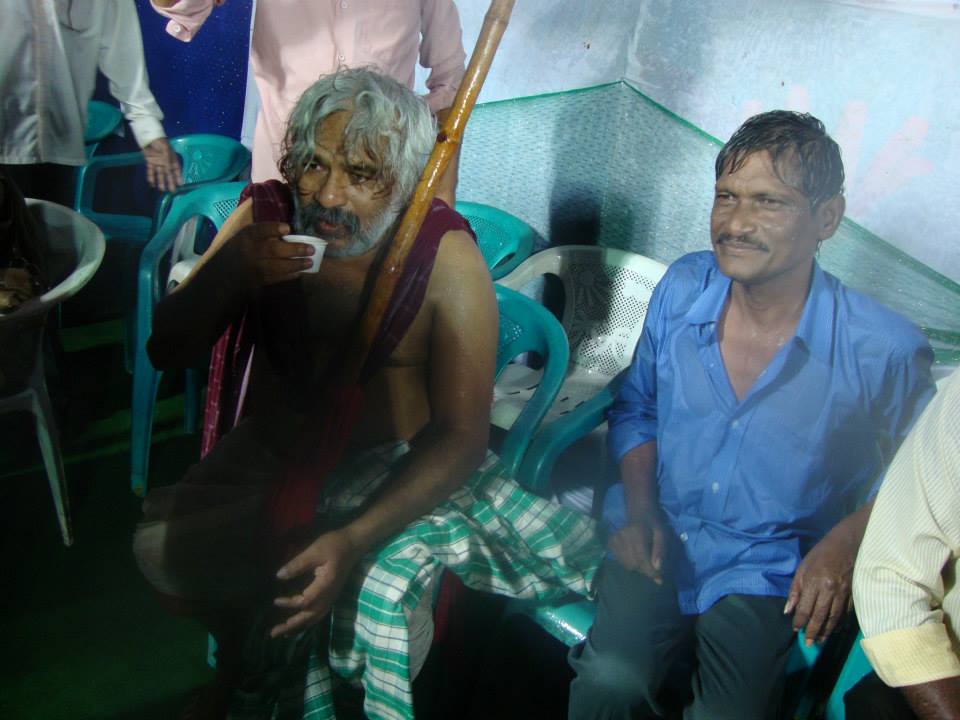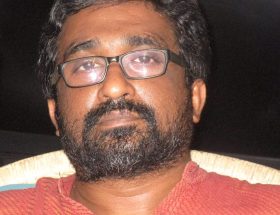Cynthia Stephen
(Book Review)
 [Debrahmanising History : Dominance and Resistance in Indian Society By Braj Ranjan Mani, Manohar, New Delhi, 2005, pp.456, Rs 895 (Hb), Rs 395 (Pb), ISBN 81-7304-640-9 (Hb) ISBN 81-7304-648-4 (Pb)]
[Debrahmanising History : Dominance and Resistance in Indian Society By Braj Ranjan Mani, Manohar, New Delhi, 2005, pp.456, Rs 895 (Hb), Rs 395 (Pb), ISBN 81-7304-640-9 (Hb) ISBN 81-7304-648-4 (Pb)]
In recent years, Indian Historiography has had its share of controversies. The ‘saffron’ rewriting of the history textbooks and the stoppage of the publication in its final stages of major reference works by the Indian Council of Historical Research are cases in point. The latter controversy has ended with one of the leading researchers resurrecting the reference works, essentially restoring status quo ante and thus hopefully ending the controversy, which saw Indian historians from both the ‘saffron’ Right and the ‘secular’ Left arguing that their version of history is the most nationalist, authentic and scientifically valid.
But do these two streams compose the sole arbiters of the history of the Indian people? Or is there a need to re-look at the way Indians ‘read’ their history? Shouldn’t there be a critique of how ancient Indian History for example, has been written about not by the people themselves, but mostly by (Brahmin) hagiographers in the courts of local kings who are known to have produced highly coloured and historically unreliable accounts of events. Some accounts by contemporaries, ‘disinterested’ observers from abroad such as Megasthenes, Huen Tsang, Fa Hsien and Alberuni, do exist, as do other significant iconographic, archaeological and numismatic evidences. But the question is who interprets these and how? Who are the members of the two opposing schools of historiography? And what is their class-caste-gender location?
The writing of Indian history in the modern sense began only in the colonial period, which profoundly impacted it. The ruling classes, both colonial and Indian wrote in turn wrote history from their perspective, and have left a heritage of controversies on choice of events, individuals and subjects they wrote about and analysed. Internationally, the feminist movement successfully challenged the attempt to universalise the history of the dominant male as the history of the human race, in the past couple of hundred years. The Subaltern School spoke of the histories of the silent or the silenced majority. But the time has come for the silenced majority of India-–the “lowered” castes as Braj Ranjan Mani refers to them-–to tell and write their own histories. But this cannot happen without deconstructing the existing canon in Indian history. Interpolations of the centuries-old Brahminical worldview shaped and coloured by its hegemony need to be identified and cast off, before history from below can be reconstructed. This also entails resurrecting the memories of the champions of peoples’ causes and giving them their rightful place , with their roles and impact analysed from hindsight.
Braj Ranjan Mani, an activist researcher working on civil liberties, and the democratisation of education, political and cultural issues, sets out to do just that in this important work. The blurb quotes two eminent writers: while Gail Omvedt declares it to be “a sweeping and radical survey of major Dalit-Bahujan intellectuals and movements…from Buddha to Ambedkar…a text for an alternative history of India…which subaltern theory suggested but subaltern scholars never attempted themselves”, Uma Chavravarti declares: “Debrahmanising History is a coherent, well-argued work…argues an oppositional point of view and is persuasive at the same time.”
The author traces the roots of Brahminic dominance to its caste indoctrination built on the theories of karma-dharma, propagated in the Sanskrit sacerdotal texts. He subjects these texts, including the Bhagvad Gita, to detailed and sharp criticism. The attempts to build and buttress dominance, he stresses, did not go unchallenged – ranged against the ascriptive Brahminical ideology were variegated Shramanas, the early heterodox counter-tradition of resistance and equity. The rising popularity of Buddha and Buddhism is discussed in the second chapter: the Buddha’s concept of bahujana hitaya (the greater common good) is contrasted with the Brahminic scheme of dominance and discrimination against the bahujana, the majority. Mani contrasts the Vedic celebration of power and violence with the Buddha’s compassion and pacifism, which inspired the emperor Ashoka to abjure war and violence in favour of welfare work to spread Dhamma. Mani points out that the propagation of Buddhism was a record of service, without coercion or force.
On language and writing, Mani points out that Brahmins chose Sanskrit over the people’s languages, Pali and Prakrit, to render their versions of the long-extant oral and written versions of Ramayana and Mahabharata; much of the secular literature, including poetry, the beast-fables and the fairy tales was also rendered into Sanskrit, with the intent of valorizing and privileging the Brahminical view of life “for the deification of brahmans and the damnation of all others, especially shudras and ati-shudras”. He cites Benjamin Walker in support of his thesis:
“Interpretations of pre-Sanskrit and what might be called ‘un-Sanskrit’ life were further distorted by wilful tendentiousness that shaped into orthodox from the mythology, history, and even the geography of ancient India. Its corruptions crept into the regional languages by its insistence on its own sanctity and stilted rules. And in most instances it debased what it influenced….”
The heterodox subaltern saint-poets of the Bhakti movements– Pambatti Sittar, Tirumular, Sivavakkiyar, Akka Mahadevi, Namdev, Chokhamela, Savata Mali, to Ravidas, Mira, Nanak, Tukaram, Kabir—form the subject of the third chapter. Sweeping across the ages – from the 6th century AD in the South to its peak in Northern India in the 15th and 16th centuries, Mani terms it the “classic site of a brahman-shraman tussle”. In contrast with the dominant view, this movement spearheaded by anti-elite saint-poets almost exclusively expounded faith in a God that is “not the transcendental brahmanic God; their God had an existence within their own being in the form of individual and social conscience…, revered not for maintaining the hierarchical order but to change it all by gracing everyone, irrespective of caste and creed”. He argues therefore that the Bhakti movement should be renamed the Mukti (Liberation) movement. Tukaram and Kabir, in particular, would have argued that the devotee had merged with the God against injustice and oppression.
Chapter Four maps the trajectory of the Western colonial project, abetted by feudal-aristocratic elements in Indian society, both Brahminical and Islamic (with some notable exceptions such as Tipu). Mani points out that the quickly ascendant British generally preferred Brahminical elites over Muslims, which then led to ‘India’ becoming synonymous with ‘Hindu’ in the colonial discourse, and being the cause for the systematic marginalisation of Buddhism, Jainism, Sikhism, and various popular folk religions and faiths. The Brahmins who interacted with the British singled out and promoted Shankara’s Vedanta from the ten major existing Indian schools of philosophy as the representative philosophy of India. Stressing the common exploitative mindsets of colonial and indigenous elites, Mani contends that the wily British recognised the divisive potential of Brahminism and its utility in keeping the masses submissive and easily amenable to exploitation. The identification of the interests of the local and foreign elites allowed for easy collusion between Brahminism and colonialism–an area yet to be fully understood and articulated.
Mani underlines the fact that despite the diversity of political agendas, the Orientalists, nationalists, and later the Hindutva saffronists all work on the assumption that Indianness was synonymous with Vedic-Brahminic Hinduism. The appendix to this chapter,entitled ”Parallel Fascist Thinking in East and West: Manu’s Brahman and Nietzsche’s Superman”, reproduce the chilling contents of a secret RSS circular No. 411, which make crystal clear the eugenics-driven, casteist and anti-dalit-and-minority mindset of the organization and its activities:
”…Hindutva should be preached with a vengeance among the physicians and pharmacists so that with their help, time-expired and spurious medicines be distributed amongst the Scheduled Castes, Mussalmans and Scheduled Tribes…Special attention should be given to the students of the Scheduled Castes and Scheduled Tribes so as to make them read the history written according to our dictates…During riots the women of Mussalmans and Scheduled Castes should be gang raped. Friends and acquaintances cannot be spared. The work should proceed on the Surat model… The demand by the Scheduled Castes and Scheduled Tribes for filling in the backlog vacancies in services shall by no means be met….see that their demands for entry into and promotion in government, non-government or semi-government institutions are rejected and their service records destroyed with damaging reports…Attacks should be started with vigour against equality-preaching communists, Ambedkarites, Islamic teachers, Christian missionaries and neighbours.”
Chapter Five, entitled “Phule’s Struggle against Brahmanical Colonialism”, highlights the “freedom struggle of India’s long-suppressed humanity against caste and Brahmanism …to rebuild society on the matrix of equity, justice and reason.” Mani points out that Phule’s critique of hegemonies anticipated Foucault’s and Said’s by almost a hundred years – Phule fiercely attacks the caste and political establishment on gender discrimination, caste, economic and ideological domination and devises classic counter-strategies: publishing vigorous critiques of dominant ideologies, struggles for emancipation of women and working classes and promotion of education, specially of girls.
Chapter Six reviews the movements led by Narayana Guru, Iyothee Dass, Periyar and Acchutanand, and arrives at an important, if unusual premise that movements from below signalled the end of colonialism.
“The so-called nationalist leaders targeted only colonial exploitation–after colluding and collaborating with and fattening themselves on colonial rule for a century and a half. Their aim was to wrest power from the British, and they showed no commitment to overthrow the internal colonisation of the lower caste masses. The subaltern leaders in the subcontinent thus came forward to challenge their hegemonic politics…[they were] left with no choice but to chart a different course with a radical agenda where the dalit-subalterns would play a major role in nation-building….Such movements became a thorn in the sides of upper-class national leadership as they posed a threat to entrenched caste and class interests”.
The piece de resistance of the volume is Chapter Seven, dealing with the Gandhi-Ambedkar debate. Mani, in contrast with existing opinion, situates the debate in the widespread alienation of Dalits from the mainstream of the national movement, rather than as a mere clash between two personalities as it has been presented. He cites important records proving that even as early as the Censuses of 1901 and 1911–decades before Ambedkar’s entry into public life–the Congress made moves to incorporate the Untouchables into the Hindu fold to bolster their numbers, which drew censure from the Muslims. Lala Lajpat Rai said on the subject : ” They (the untouchables) … are with us, but they are not of us…”
And again:
“… Many of them (the Depressed Classes) have already become conscious of the wretched position they hold in Hindu society…. It will be no wonder if a large number of them leave Hindu society with thoughts of retaliation and revenge.”
‘The True Story of the Poona Pact’ is told against the backdrop of the clash between the two leaders on the subject of separate electorates in the Second Round Table Conference at London in 1931. The debate was inconclusive, and the matter left to the British Prime Minister Ramsey MacDonald to resolve, who some months later conveyed a compromise formula, though he also wrote to Gandhi that the number of special seats thus created (for genuine representation of the Depressed Classes) was too small:
“It was not a proposal to provide a quota numerically appropriate for the total representation of the whole of the Depressed Classes,” (and) thus was a departure from (Ambedkar’s) idea of a separate electorate for the Depressed Classes. Still, Gandhi saw a threat to Hinduism in the policy and started a fast unto death in protest ”as a man of religion”. To him, the matter was purely religious and he gave no reasons in support of his stand. Mani has compiled telling quotes, from a conversation with Sardar Patel which reveal the reasoning behind Gandhi’s actions, one day after he began his fast unto death, as recorded by Mahadev Desai, Gandhi’s secretary, to justify his threat of self-immolation:
”The possible consequences of separate electorates leaves me with horrors. Separate electorates for all other communities will still leave room for me to deal with them, but I have no other means to deal with ‘untouchables’…. It will create division among Hindus so much so that it will lead to blood-shed. Untouchable hooligans will make common cause with Muslim hooligans and kill caste Hindus.”
Extensively quoting Ambedkar, Mani evokes the severe pressure put upon the isolated Ambedkar to accept Gandhi’s position unconditionally. Ambedkar’s characteristic response was to issue a detailed statement refuting his critics and clarifying his position:
”It has fallen to my lot to be villain of the piece. But I tell you I shall not deter from my pious duty, and betray the just and legitimate interests of my people even if you hang me on the nearest lamp-post in the street.”
Further:
”There have been many Mahatmas in India whose sole object was to remove Untouchability and to elevate and absorb the Depressed Classes but every one of them has failed in his mission. Mahatmas have come and Mahatmas have gone. But the Untouchables have remained as Untouchables.”
The debate ended with a one-on-one discussion between a critically ill, fasting Gandhi and Ambedkar, resulting in the Poona Pact. Subsequent events proved Ambedkar’s misgivings were justified: analysing the 1937 elections, he showed how the Congress selected the best educated candidates from the higher castes, and fielded the least educated candidates for the reserved categories. This trend continues in all political parties to this day.
In the Epilogue, Mani argues that despite the long-drawn tradition of resistance, “caste consciousness and the brahmanical mindset persist” in modern garb, in defiance of egalitarian ideals, causing India to remain one of the most iniquitous and unjust societies. He contends that in fact technological advances “have heralded a neo-brahmanic dominance”. Despite modern education and liberal-democratic ideals and legislations enshrined in the Constitution, caste continues to effectively exclude the overwhelming majority from any influence in decision-making. The Arjuna Award, Mani says, is the highest award given to an Indian sportsperson. However, the Mahabharata says that Arjuna could stake the title of the best archer only after Karna and Ekalavya were perfidiously deprived of their rightful claims to the title! The Dronacharya Award, national award for best sports coach, is named for Arjuna’s duplicitous guru – who ensured Arjuna’s victory by ensuring that Ekalavya would never shoot an arrow again. Braj Ranjan Mani asks rhetorically, “How can a country whose moral foundations are based on bricks of deceit and double standards excel in social democracy?”
Overall, the book is a pioneering scholarly effort written from the perspective of the silenced masses of India, but its only lacuna is that it is silent about the Adivasis. It is an easy read, though it is a long-overdue work. May many more such be written!
[Cynthia Stephen is an Independent Writer and Researcher]
PS: Debrahmanising History: Dominance and Resistance in Indian Society, by Braj Ranjan Mani has gone into four reprints in paperback in the last five years. It is an important one-of-kind work that needs to be read at all levels. You can read another article by Braj Ranjan Mani over here.










